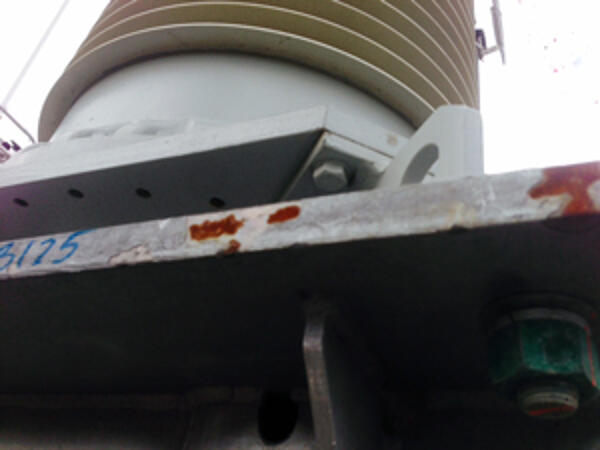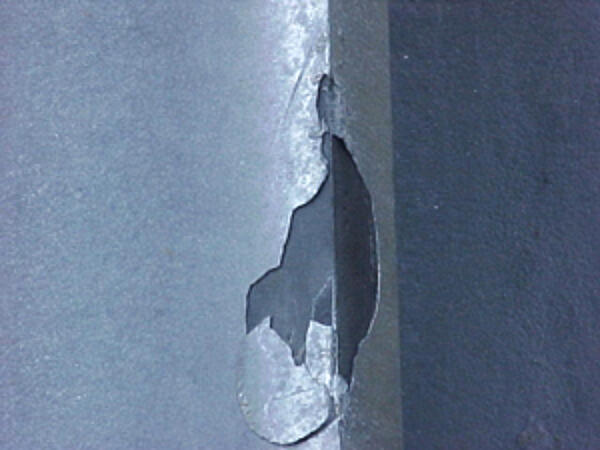Cut Edges
Why am I having difficulty keeping the coating intact on the edge of some plate materials? The coating seems to flake off and the plate material develops steel corrosion on the exposed edge.

The edges of plate materials are prepared in a number of different fabrication steps. Many edges are sheared by large machines if the plate material does not have critical dimensions or if the steel is a low strength. Other plate material may have edges cut through computer controlled laser cutting tables. Another method of cutting plate edges is through oxygen flame cutting. The fabricator chooses one of these methods or other cutting techniques to produce plates of the correct size for the steel assemblies.
Some of these cutting techniques produce a clean edge, but if the technique produces a significant amount of energy in the steel during the cutting process; the high-energy cutting techniques can change the local properties of the steel and increase the local steel hardness at the edge of the plate. The increase in hardness can change the diffusion properties of the steel at the edge and make it very difficult to form the galvanized coating on this edge.

This issue is further complicated when the plate steel has a silicon and/or phosphorus content that is very reactive in the galvanizing kettle. The reactive steel grows a thick coating, which in and of itself can be prone to flaking due to the stresses in the coating from the metal contraction differences in the cooling of the plate from the galvanizing temperature to ambient. Thick coatings and high stress in the plate steel can make the coating susceptible to flaking and this is due to the silicon and/or phosphorus content in the plate steel.
When the galvanized coating is thick, and the edge does not grow a well-adhered coating, the edge may show signs of flaking. This can also be propagated by handling the plate steel by forklifts and by contact with the pavement when stored on the lot at the galvanizing facility. These material handling steps can add stress to the already weak coating adherence and cause the flaking to begin at the edge. The edges of plate material can be visually examined for signs of flaking and the areas can be repaired in accordance with ASTM A780.
Communication between the galvanizer, the fabricator and the steel supplier can expose the potential of this problem before it becomes an inspection issue at the job site after the plate has been hot-dip galvanized. The galvanizer is responsible for preventing and or repairing edge flaking or other damage while the material is at the galvanizing facility, but is not responsible for edge flaking which occurs upon impact or handling techniques once under customer ownership.
© 2024 American Galvanizers Association. The material provided herein has been developed to provide accurate and authoritative information about after-fabrication hot-dip galvanized steel. This material provides general information only and is not intended as a substitute for competent professional examination and verification as to suitability and applicability. The information provided herein is not intended as a representation or warranty on the part of the AGA. Anyone making use of this information assumes all liability arising from such use.

